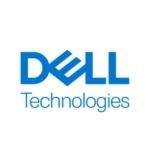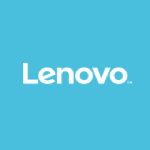We've used IBM Power Systems in our passport and immigration department. It's a government-run department.
We've also used it with a few SMEs. They required smaller versions offsite with our systems. We did sell an IBM system to a couple of universities where they had about 20,000 students. It's used in a variety of instances and environments.
I'm working for an IT company and our work is to sell the products, I'm not really a direct user of it. I can't really say much about the features as I'm not an end-user.
The product does offer co-marketing services to their partners.
The solution is the best product on the market.
The technical support that clients get from IBM is excellent.
Overall, IBM actually does restrict us, the sellers, at a limited percentage of margin when you're selling the product. We cannot go above 8%. That's something as a business that can be difficult, as we do suffer because at times. We don't have the option of quoting more and making more money out of it. We can't due to the IBM compliance.
In terms of features, as a salesperson and not an end-user, I haven't really explored the product and can't say exactly what might be lacking.
IBM does have a market presence here in Pakistan, however, the kind of penetration that Huawei has is a lot more. They have a larger enterprise team that sells products here and they have a direct relationship with the customers. IBM relies a lot more on the partners rather than going to the customers directly. Due to their approach, Huawei has captured about 70-80% of the server and storage industry and market in Pakistan.
I do understand that IBM does offer co-marketing funds for us to actually promote IBM and its products. We have actually utilized them in the past as well, maybe three, four years ago. However, IBM does have a very, very, strict kind of compliance. When it comes to us providing documentation, there is cross-questioning. Our finance team may even back out not because of the misuse of money, but because of the amount of documentation required. It's not worth it for our marketing and finance team to utilize the offer. It's too rigorous and it takes them off dealing with other aspects of their jobs.
IBM should be more flexible with marketing or offer marketing events themselves and invite the partners to attend. That might be far more productive.
We've been dealing with the solution for five or six years at least at this point. It may even be a bit longer. It's been a while.
We've sold this product to a variety of organizations, from SMEs to government departments to universities, and the sizing suits them all.
We do plan to continue to offer the product to other clients in the future.
Our team has never escalated any issues when it comes to getting support directly from IBM. In that sense, they are pretty much satisfied. It's my understanding that support is something that IBM is really good at. That's the reason why IBM does have the type of customers who do have the appropriate budget and who really value the services and the after-sales services and support that IBM offers.
We have our own installation and deployment team for IBM. They handle all aspects of it so that the client doesn't have to worry about the technical side.
We handle the implementation for our clients.
The solution is relatively expensive if you compare it with any competitors of IBM. I would say you need to compare this price with the Huawei or with HPE and probably with Dell EMC.
Their products are relatively cheaper compared to IBM. I do understand that IBM does offer the best product, however, in terms of pricing, that's something that does limit us. Usually, when we participate in opportunities we do qualify when it comes to the technical side of things. Financially we are looking at the highest or maybe the second-highest price. That's something that actually makes us not want to sell IBM if we can avoid it.
We typically use the latest versions of the solution. We tend to follow whatever the customer requirement is. They are inclined to work by night in the office on the latest product that IBM is offering.
We work with on-premise as, over here at least, people are not too inclined towards the cloud. They prefer having hardware of their own in their own data centers.
I'd recommend this solution to other organizations.
Overall, on a scale from one to ten, I'd rate it at an eight.
Better pricing would be one thing that may convince me to give it higher marks.













In the next release, I would like IBM Power Systems to include a visual operational management console where I can manage all my IBM Power machines end-to-end. - IBM have provided Navigator for i worth checking out.